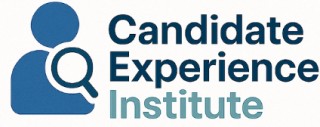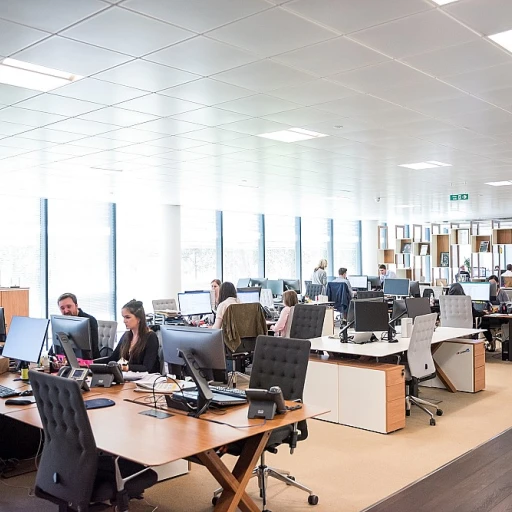
Understanding the Importance of a Workplace Profile
Recognizing the Role of a Workplace Profile
In today's competitive job market, understanding the role of a workplace profile is more critical than ever. It serves as a catalyst in bridging the gap between potential candidates and employers, enhancing transparency and fostering a sense of belonging before even stepping foot in the office. The workplace profile is a comprehensive insight into the company’s environment, team dynamics, and work style, all of which play a pivotal role in shaping a candidate’s expectations and experiences.
Engaging candidates effectively begins with clarity around what they can expect within the organization. This extends beyond the basic job description – it encompasses the culture, values, and intricacies of how work is conducted within the team. A well-crafted profile includes elements like DISC assessments, style profiles, and management profiles, reflecting the behaviors and styles that define the group.
Reports and profiles such as the DISC workplace or PXT Select are instrumental in illustrating these components. They provide actionable strategies for both the recruitment process and ongoing team facilitation, easing integration for new hires. The tailored information offered by style assessments or group reports helps in creating a compatibility gauge for potential employees.
Key Elements of a Compelling Workplace Profile
Essential Components of an Engaging Workplace Profile
Creating a workplace profile that truly resonates with candidates requires intentional focus on a few key elements. These insights not only heighten the appeal of your company but also provide deep insights into how potential employees might fit into your unique environment.- Accurate Representation of Work and Team Dynamics: Offer a transparent overview of the work style and team environment within the organization. Providing a clear picture through DISC workplace assessments or similar tools can help prospective candidates understand if their work behaviors align with your current team dynamics.
- Cultural Reflection and Values Alignment: Incorporate your organization's core values and culture into your workplace profile. This not only attracts individuals who are already in sync with your values but also serves as a catalyst for discussions around productive conflict and team cohesion. DISC certification can guide the facilitation of this aspect.
- Role-Specific Style Profiles and Assessments: Detailed style profiles and assessments, such as the PXT Select or DISC assessments, allow candidates to visualize how their personal work style can contribute effectively to the team. These assessments act as manageable packages of pivotal insights that help prospective employees gauge their potential impact within their role.
- Tools You Use and Technologies in Place: Conveying the technological landscape of your workplace is crucial. Highlighting tools like DISC sales and management profiles can inform candidates about the actionable strategies your company employs, which can be a significant factor for those interested in a tech-savvy work environment.
- Included Growth and Learning Opportunities: Showcase the opportunities for growth and development within the company. Whether it’s through certifications, such as DISC certification or Wiley DISC courses, these added benefits can enhance your appeal to potential candidates, showcasing your company’s commitment to fostering career development.
Aligning Workplace Profile with Company Culture
Integrating Organizational Culture in Workplace Representations
The representation of a company's culture within its workplace profile plays a pivotal role in the candidate experience. A work environment that aligns with personal values often results in greater job satisfaction and productivity. To convey this effectively, consider the following actionable strategies:- Highlight Core Values: Clearly communicate the company's core values and how they manifest in daily operations. This provides candidates with a deeper understanding of the organization's ethos.
- Provide Contextual Examples: Use stories or examples that showcase the company's culture in action. This might include descriptions of team celebrations or the approach to work-life balance, which can serve as a catalyst for candidates to visualize themselves within the company.
- Incorporate Behavioral Assessments: Tools such as the Disc assessment can be leveraged to identify and articulate the prevalent work styles and team behaviors. These can be detailed in a group report that prospective candidates can evaluate to see how they might fit in with existing teams.
- Emphasize Learning Opportunities: Inform candidates about opportunities for professional growth, such as certification programs like Disc certification or management profile training. These packages demonstrate a commitment to employee development.
- Leverage Technology for Consistency: Ensure that technology platforms consist of updated work profiles that contain accurate information. Tools like the Disc Workplace or PXT Select can be integrated to automate and streamline the presentation of workplace profiles across different platforms.
Utilizing Technology to Enhance Workplace Profiles
Harnessing Technology to Develop Robust Workplace Profiles
In today's digital age, leveraging advanced technology is crucial in cultivating a workplace profile that truly enhances the candidate experience. By integrating software tools and assessments, organizations create dynamic profiles that paint a comprehensive picture not only of job requirements but also of the team culture and work environment. To begin with, organizations should utilize comprehensive assessment tools such as the popular DISC assessment or PXT Select, which help identify the key behaviors and styles imperative to a specific role. These tools offer a glimpse into how a potential hire will fit into the team's dynamic. DISC profiles, for example, categorize behavioral styles that provide insight into a candidate's communication and work style, promoting a productive work environment. Additionally, DISC certification programs allow HR professionals to personalize these insights, ensuring workplace profiles are tailored to meet specific organizational demands. Another vital technology opportunity lies in using group reports to synthesize data from multiple assessments. These reports can generate actionable strategies to enhance team cohesion and facilitate effective management. For instance, a DISC Workplace Report might reveal a team's dominant styles and suggest strategies to balance diverse approaches, fostering collaboration and reducing conflict. Access to this level of insight can readily be a catalyst for creating a cohesive, efficient team. Furthermore, incorporating management profile tools ensures that candidates understand the leadership style they will work with. Complete management assessments provide candidates with a clearer view, making them feel informed and confident about their fit in the organizational structure. Lastly, organizations should consider platforms where candidates can "add to cart" various certification packages that enhance their skills. Offering such certifications related to behavior and style profiles encourages continuous learning and development, which is a considerable draw for prospective employees and aligns with the evolving nature of work settings. By skillfully leveraging technology, organizations not only craft more informative workplace profiles but also solidify their commitment to offering both candidates and employees an exceptional experience throughout their career journey.Measuring the Impact of Workplace Profiles on Candidate Experience
Evaluating the Influence of Workplace Profiles
Measuring the impact of workplace profiles on candidate experience is crucial for understanding their effectiveness. A well-crafted profile can serve as a catalyst for attracting top talent and enhancing the overall recruitment process. Here are some actionable strategies to assess their impact:
- Feedback Collection: Gathering feedback from candidates who have interacted with your workplace profile can provide insights into its effectiveness. Consider using surveys or interviews to learn about their perceptions and experiences.
- Behavioral Assessments: Tools like DISC assessment or PXT Select can help in understanding how candidates perceive your workplace culture. These assessments offer a style profile that aligns with your company’s values and work style.
- Performance Metrics: Track key performance indicators such as application rates, candidate engagement levels, and conversion rates. These metrics can offer a quantitative measure of how well your workplace profile is resonating with potential hires.
- Group Reports: Utilize group reports to analyze trends and patterns in candidate behavior. This can help in identifying areas where your workplace profile excels or needs improvement.
- Certification and Training: Consider investing in DISC certification or similar programs for your HR team. This can enhance their ability to create and manage effective workplace profiles that align with your company culture.
By implementing these strategies, organizations can gain a comprehensive understanding of how their workplace profiles influence candidate experience. This not only aids in refining the profiles but also ensures they serve as an epic tool in attracting and retaining the right talent.













